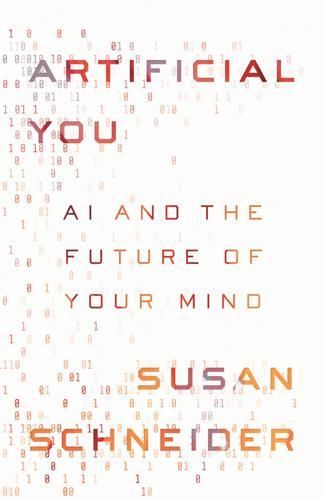
Artificial You: AI and the Future of Your Mind
by
Susan Schneider
Published 1 Oct 2019
It might just be that a different type of property, or properties, gives rise to consciousness in machines. As I shall explain in Chapter Four, to tell whether AI is conscious, we must look beyond the chemical properties of particular substrates and seek clues in the AI’s behavior. Another line of argument is more subtle and harder to dismiss. It stems from a famous thought experiment, called “The Chinese Room,” authored by the philosopher John Searle. Searle asks you to suppose that he is locked inside a room. Inside the room, there is an opening through which he is handed cards with strings of Chinese symbols. But Searle doesn’t speak Chinese, although before he goes inside the room, he is handed a book of rules (in English) that allows him to look up a particular string and then write down some other particular string in response.
…
Ned Block (1995a) has discussed a related notion of “access consciousness.” 2. Bringsjord and Bello (2018). 3. See Schneider and Turner (2017); Schneider (forthcoming). 4. Of course, this is not to suggest that deaf people can’t appreciate music at all. 5. Those familiar with Frank Jackson’s Knowledge Argument will recognize that I am borrowing from his famous thought experiment involving Mary, a neuroscientist, who is supposed to know all the “physical facts” about color vision (i.e., facts about the neuroscience of vision) but who has never seen red. Jackson asks: What happens when she sees red for the first time? Does she learn something new—some fact that goes beyond the resources of neuroscience and physics?
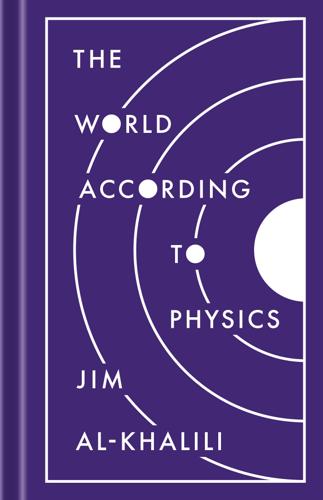
The World According to Physics
by
Jim Al-Khalili
Published 10 Mar 2020
Nevertheless, some of the most important breakthroughs in physics have been the results of the logical conclusions drawn not from real experiments or observations, but from ‘thought experiments’, whereby the physicist considers some hypothesis and devises an imaginary experiment that can test its consequences. Such an experiment may or may not be possible to perform in practice, but it can still provide us with a valuable tool to learn about the world through the power of logic and reasoning alone. Some of the most famous thought experiments were conducted by Einstein and helped him develop his theories of relativity. Once his theories were fully developed of course they could be tested in real laboratory experiments. When it comes to the meaning of space and time the difficulty we have is not surprising, for we are ourselves imprisoned within them, and it is hard to free our minds from their confines and ‘see’ reality from the outside.
…
Whether or not this process fully explains the measurement problem is still a matter of debate in some quarters. The thorny issue of how to solve the measurement problem and the boundary between the quantum world and the large classical world was first made famous by Erwin Schrödinger in the mid-1930s, when he came up with his famous thought experiment. Despite being one of the pioneers and founders of the field, Schrödinger tried to highlight his own misgivings about the meaning of quantum mechanics. He asked what would happen if we were to shut a cat in a box with a radioactive substance and a container with lethal poison. All the while the box is closed, we cannot say whether or not a particle has been emitted by the radioactive material, triggering a mechanism that releases the poison, killing the cat.
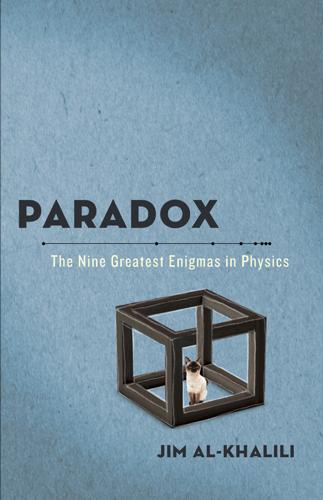
Paradox: The Nine Greatest Enigmas in Physics
by
Jim Al-Khalili
Published 22 Oct 2012
So you can see how, over the years, scientists have been drawn again and again to the challenge of devising situations in which it would seem that the Second Law was being violated. Most notable of all was the nineteenth-century Scottish mathematical physicist James Clerk Maxwell, who famously figured out that light consists of fluctuating electric and magnetic fields. In a public lecture he delivered in 1867, he described his famous thought experiment involving the imaginary demon on a mission to defy the Second Law of Thermodynamics, who controls the trapdoor between the two chambers in the box. In controlling the door it acts like a valve that allows the energetic, “hot” molecules of air to move only one way and the slow, “cold” molecules to go only in the opposite direction.
…
(New York: Dover, 1951), p. 4. 9 THE PARADOX OF SCHRÖDINGERS CAT The cat in the box is both dead and alive—until we look. In 1935 one of the founders of quantum mechanics, the Austrian genius Erwin Schrödinger, had had enough of the weird interpretations of its mathematics. Following lengthy discussions with, among others, Albert Einstein himself, he proposed one of the most famous thought experiments in the history of science. He wrote a lengthy paper entitled “The Present Situation in Quantum Mechanics,” which was published in a leading German scientific journal. It has since become known simply as the “Schrödingers cat paper,” and it is incredible how many people, quantum physicists included, have since tied themselves up in knots trying to emphasize or explain away the supposed paradox Schrödinger described in it.
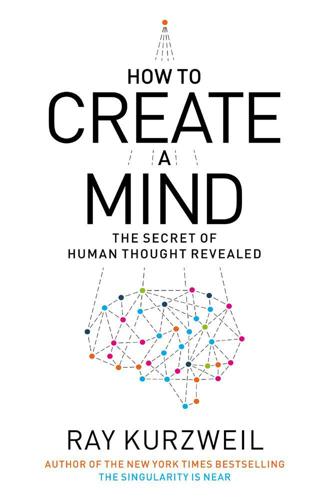
How to Create a Mind: The Secret of Human Thought Revealed
by
Ray Kurzweil
Published 13 Nov 2012
It is also true that subsequent experimental validation of Einstein’s theories has used advanced technologies, and if these had not been developed we would not have the validation that we possess today that Einstein’s ideas are authentic and significant. However, such factors do not detract from the fact that these famous thought experiments reveal the power of human thinking at its finest. Einstein is widely regarded as the leading scientist of the twentieth century (and Darwin would be a good contender for that honor in the nineteenth century), yet the mathematics underlying his theories is ultimately not very complicated.
…
One common failure is the difficulty that most people have in discarding and transcending the ideas and perspectives of their peers. There are other inadequacies as well, which we will discuss in more detail after we have examined how the neocortex works. A Unified Model of the Neocortex The most important reason I am sharing what are perhaps the most famous thought experiments in history is as an introduction to using the same approach with respect to the brain. As you will see, we can get remarkably far in figuring out how human intelligence works through some simple mind experiments of our own. Considering the subject matter involved, mind experiments should be a very appropriate approach.
…
Humans in fact do a very poor job of solving the kinds of problems that a quantum computer would excel at (such as factoring large numbers). And if any of this proved to be true, there would be nothing barring quantum computing from also being used in our computers. John Searle is famous for introducing a thought experiment he calls “the Chinese room,” an argument I discuss in detail in The Singularity Is Near.9 In short, it involves a man who takes in written questions in Chinese and then answers them. In order to do this, he uses an elaborate rulebook. Searle claims that the man has no true understanding of Chinese and is not “conscious” of the language (as he does not understand the questions or the answers) despite his apparent ability to answer questions in Chinese.
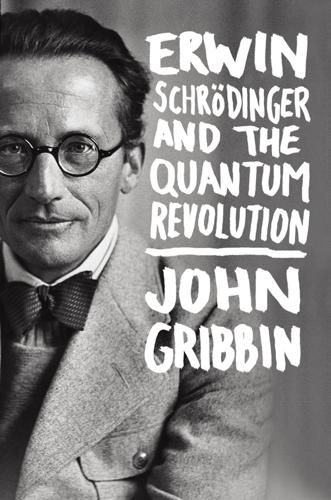
Erwin Schrodinger and the Quantum Revolution
by
John Gribbin
Published 1 Mar 2012
But it does show that it is possible to understand quantum mechanics without invoking the “collapse of the wave function”—and that in itself is a thoroughly good thing, since there is nothing in the equations that describes, or requires, such a collapse; it is merely a heuristic device introduced by Bohr on the basis of no evidence whatsoever. And Schrödinger hated it. As I discuss in the next chapter, Schrödinger’s antipathy to the idea of collapsing wave functions led him to his most famous thought experiment. But by the time he came up with the idea he had left Berlin, as a result of the political turmoil that swept through Germany in the early 1930s. People and politics The immediate trigger for that turmoil was the global economic crisis that followed the Wall Street crash of October 1929.
…
He wrote at once to Einstein, commenting that “my interpretation is that we do not have a q.m. that is consistent with relativity theory, i.e., with a finite transmission speed of all influences,” and in a paper published in the Proceedings of the Cambridge Philosophical Society later that year said: “It is rather discomforting that the theory should allow a system to be steered or piloted into one or the other type of state at the experimenter’s mercy in spite of his having no access to it.”3 This was the genesis of Schrödinger’s famous cat. The cat in the box The ideas encapsulated in the famous “thought experiment” involving Schrödinger’s cat actually came in no small measure from Einstein, in the extended correspondence between the two triggered by the EPR paper and preserved in the Einstein Archive at Princeton University. Einstein introduced the idea of two closed boxes and a single ball, “which can be found in one or the other of the two boxes when an observation is made” by looking inside the box.
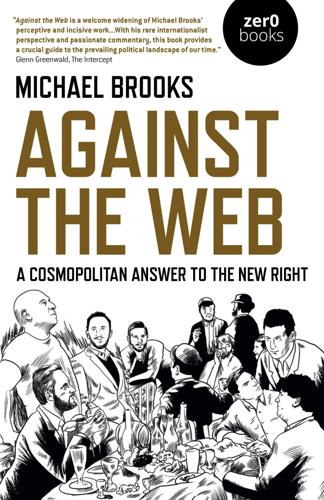
Against the Web: A Cosmopolitan Answer to the New Right
by
Michael Brooks
Published 23 Apr 2020
According to my friend Ben Burgis, the author of Give Them An Argument: Logic for the Left, a thought experiment generally refers to two things: first, an imaginary situation designed to test whether a certain definition of a concept captures what we really mean by it, and second, an imaginary situation in which we bring two moral principles into conflict in order to discover which one we care more about. The most famous thought experiment is the so-called “Trolley Problem,” which was originally formulated by the British philosopher Philippa Foot, though the version that most people are familiar with incorporates a change suggested by the American philosopher Judith Jarvis Thomson. Here’s Foot’s original example: Edward is the driver of a trolley whose breaks have just failed.

The Bomber Mafia: A Dream, a Temptation, and the Longest Night of the Second World War
by
Malcolm Gladwell
Published 26 Apr 2021
If we just take out the propeller-spring factory in Pittsburgh, we cripple their air force. And if we can find another dozen or so crucial targets just like that—“choke points” was the phrase he used—bombing could cripple the whole country. Wilson then devised one of the Bomber Mafia’s most famous thought experiments. And remember, the men could only do thought experiments. They didn’t have any real bombers. Or any real enemy. Or any real resources. They were spitballing. In the thought experiment, Wilson made the manufacturing hub of the Northeast the target: Now, when we began theorizing about this thing…we had no air intelligence of any possible enemy.
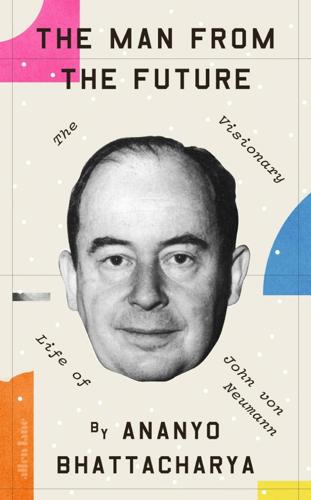
The Man From the Future: The Visionary Life of John Von Neumann
by
Ananyo Bhattacharya
Published 6 Oct 2021
Erwin Schrödinger disagreed. Three years after the publication of von Neumann’s book, Schrödinger discussed with Einstein the weaknesses in what would become known as the Copenhagen interpretation of quantum mechanics. Inspired by their frenzied exchange of letters, Schrödinger posed the most famous thought experiment of all time to highlight the absurdity of applying quantum mechanics willy-nilly to everyday objects.49 If the rules of quantum mechanics could, as von Neumann argued, be applied just as well to large things, then why, thought Schrödinger, should they not apply to insects? Or mice? Or cats?
…
This ‘nonlocality’ is built into both standard quantum mechanics (via entanglement) and Bohm’s theory (via the all-seeing pilot wave). And that looks awkward at first glance because according to Einstein’s special theory of relativity (which no experiment has ever contradicted) nothing can travel faster than light. Einstein, with two collaborators, Nathan Rosen and Boris Podolsky, had pointed this out himself with a famous thought experiment that became known as the EPR paradox.73 The upshot of their paper was that quantum theory must be incomplete because, according to the theory, a measurement of a particular property on one of a pair of entangled particles immediately determines the corresponding state of the other, no matter how far away it is.
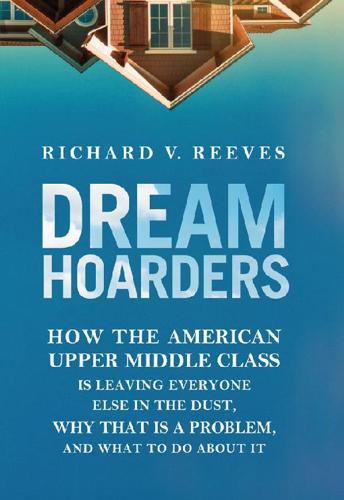
Dream Hoarders: How the American Upper Middle Class Is Leaving Everyone Else in the Dust, Why That Is a Problem, and What to Do About It
by
Richard V. Reeves
Published 22 May 2017
More importantly, low rates of downward mobility may undermine support for redistributive policies. If affluent parents are reasonably certain their children will stay up in the higher reaches of the income distribution, they have less reason to support institutions and policies that favor the less fortunate. After all, their children won’t need them.26 In his famous thought experiment, the philosopher John Rawls suggested that a just society would be the one that was agreed upon by people unaware of which rung they would occupy, from behind what he called a “veil of ignorance.” Behind this veil, “no one knows his place in society, his class position or social status; nor does he know his fortune in the distribution of natural assets and abilities, his intelligence and strength, and the like.”27 Rawls’s elegant, contract-based approach to social justice was arguably the biggest philosophical advance of the twentieth century and prepared the ground for a flowering of egalitarian thought.
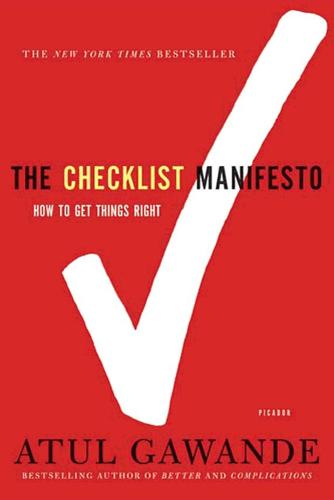
The Checklist Manifesto: How to Get Things Right
by
Atul Gawande
Published 2 Jan 2009
We’re obsessed in medicine with having great components—the best drugs, the best devices, the best specialists—but pay little attention to how to make them fit together well. Berwick notes how wrongheaded this approach is. “Anyone who understands systems will know immediately that optimizing parts is not a good route to system excellence,” he says. He gives the example of a famous thought experiment of trying to build the world’s greatest car by assembling the world’s greatest car parts. We connect the engine of a Ferrari, the brakes of a Porsche, the suspension of a BMW, the body of a Volvo. “What we get, of course, is nothing close to a great car; we get a pile of very expensive junk.”

Neutrino Hunters: The Thrilling Chase for a Ghostly Particle to Unlock the Secrets of the Universe
by
Ray Jayawardhana
Published 10 Dec 2013
What’s more, Heisenberg pointed out that in the quantum world there is an inherent uncertainty to how well you can pin down the properties of a particle. The determinism of classical mechanics gave way to mere statistical probabilities: instead of predicting definitive outcomes, quantum mechanics assigns likelihood to different results. That meant, as Erwin Schrödinger pointed out in a famous thought experiment, a cat in a box could be both alive and dead at the same time, until an observer intervenes by looking in. The consequences are so bizarre that Bohr is reported to have said, “Those who are not shocked when they first come across quantum theory cannot possibly have understood it.” Remarkably, during this period of major upheaval in physics, theory and experiment kept pace with each other.

The Comforts of a Muddy Saturday
by
Alexander McCall Smith
Published 22 Sep 2008
Then she picked up the letter again and began to enumerate its various effronteries and, not to beat about the bush, lies. To begin with, there was Dove’s choice of the words you may be familiar with: that may have sounded innocuous, but was in reality a piece of naked condescension. Of course she would be familiar with the Trolley Problem, one of the most famous thought experiments of twentieth-century philosophy—and twenty-first-century philosophy, too, as the problem continued to rumble along, as everyone knew. Everyone professionally involved in philosophy, that is, and that included Isabel. To suggest that she may be familiar with it was to imply ignorance on her part; what Dove should have written was you will of course be familiar with.
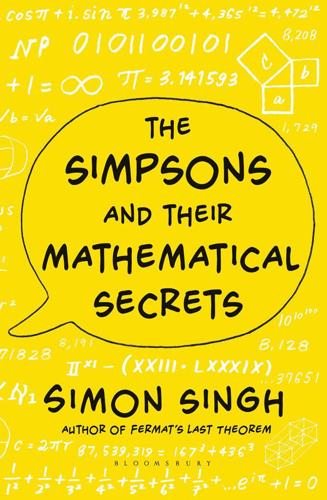
The Simpsons and Their Mathematical Secrets
by
Simon Singh
Published 29 Oct 2013
Ed Witten, one of the fathers of superstring theory, is generally considered the world’s greatest living theoretical physicist and arguably the smartest scientist never to have won a Nobel Prize. By way of compensation, Witten can at least claim the accolade of being immortalized in Futurama. Schrödinger’s cat is a famous thought experiment, one that is conducted in our imaginations rather than in the laboratory. Erwin Schrödinger, who won the Nobel Prize in Physics in 1933, asked what would happen inside a wooden box containing a cat, some radioactive material, and a poisoning mechanism that can be triggered by an unpredictable radioactive decay.

From eternity to here: the quest for the ultimate theory of time
by
Sean M. Carroll
Published 15 Jan 2010
The Past Hypothesis is necessary to make sense of the world around us, but it has a lot to answer for. MAXWELL’S DEMON Let’s shift gears a bit to return to the thought-experiment playground of nineteenth-century kinetic theory. Ultimately this will lead us to the connection between entropy and information, which will circle back to illuminate the question of memory. Perhaps the most famous thought experiment in all of thermodynamics is Maxwell’s Demon. James Clerk Maxwell proposed his Demon—more famous than Laplace’s, and equally menacing in its own way—in 1867, when the atomic hypothesis was just beginning to be applied to problems of thermodynamics. Boltzmann’s first work on the subject wasn’t until the 1870s, so Maxwell didn’t have recourse to the definition of entropy in the context of kinetic theory.
…
The solution for the curvature of spacetime around an infinite cylinder was actually found by Willem Jacob van Stockum, Dutch physicist (and bomber pilot), in 1937, but Van Stockum didn’t notice that his solution contained closed timelike curves. An excellent overview of both research into time machines in general relativity, and the appearance of time travel in fiction, can be found in Nahin (1999). 81 Erwin Schrödinger, one of the pioneers of quantum mechanics, proposed a famous thought experiment to illustrate the bizarre nature of quantum superposition. He imagined placing the cat in a sealed box containing a radioactive source that, in some fixed time interval, had a 50 percent chance of decaying and activating a source that would release poison gas into the box. According to the conventional view of quantum mechanics, the resulting system is in an equal superposition of “alive cat” and “dead cat,” at least until someone observes the cat; see Chapter Eleven for discussion. 82 Kip Thorne has pointed out the “grandfather paradox” seems a bit squeamish, with the introduction of the extra generation and all, not to mention that it’s somewhat patriarchal.
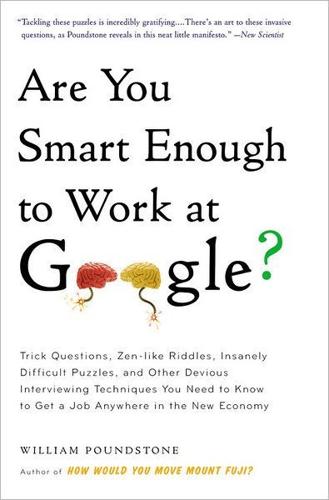
Are You Smart Enough to Work at Google?: Trick Questions, Zen-Like Riddles, Insanely Difficult Puzzles, and Other Devious Interviewing Techniques You ... Know to Get a Job Anywhere in the New Economy
by
William Poundstone
Published 4 Jan 2012
A helium balloon does the opposite of what a mass does because it’s a deficit of mass. The real mass—the air—is invisible. Interviewers who ask this question don’t expect you to know much physics. But there is an alternate response that makes use of the theory of relativity. Seriously. It relates to Albert Einstein’s famous thought experiment about the elevator. Imagine you’re in an elevator going to your tax preparer’s office, and a mischievous extraterrestrial decides it would be fun to teleport you and the elevator into intergalactic space. The elevator is sealed, so there’s enough air inside to keep you alive long enough to amuse the alien for a few minutes.
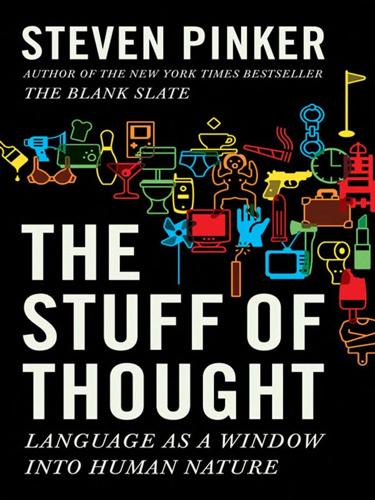
The Stuff of Thought: Language as a Window Into Human Nature
by
Steven Pinker
Published 10 Sep 2007
The semantic distinction between after and from points to a causal distinction between succession and impingement, which in turn animates a moral distinction between tragedy and evil. Another force-dynamic distinction, the one between causing and letting, deeply penetrates our moral reasoning. The difference is exposed in the trolley problem, a famous thought experiment devised by the philosopher Philippa Foot that has long been a talking point among moral philosophers. 141 A trolley is hurtling out of control and is bearing down on five railroad workers who don’t see it coming. You are standing by a switch and can divert the trolley onto another track, though it will then kill a single worker who hasn’t noticed the danger either.
…
Putnam argues that words, like goods and services, are the product of a division of labor within a society: we often have to depend on experts to distinguish the meanings, rather than doing it all ourselves. Putnam drives home the point that natural-kind terms don’t have definitions with the help of a now-famous thought experiment. Imagine a planet far away that is an exact duplicate of Earth, with people who look and think just like us, live in surroundings similar to ours, and even speak a language indistinguishable from English. The only difference is that the liquid that the natives call water is not H2O but a compound with a very long and complicated chemical formula that can be abbreviated XYZ.
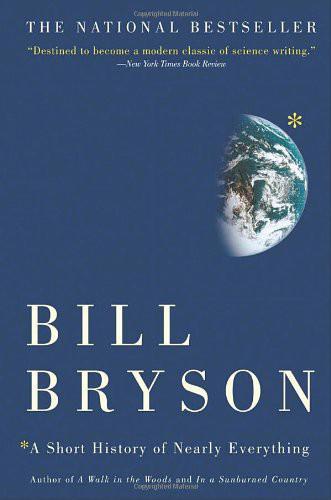
A Short History of Nearly Everything
by
Bill Bryson
Published 5 May 2003
Scheele's one notable shortcoming was a curious insistence on tasting a little of everything he worked with, including such notoriously disagreeable substances as mercury, prussic acid (another of his discoveries), and hydrocyanic acid—a compound so famously poisonous that 150 years later Erwin Schrödinger chose it as his toxin of choice in a famous thought experiment (see page 146). Scheele's rashness eventually caught up with him. In 1786, aged just forty-three, he was found dead at his workbench surrounded by an array of toxic chemicals, any one of which could have accounted for the stunned and terminal look on his face. Were the world just and Swedish-speaking, Scheele would have enjoyed universal acclaim.
…
Remarkably, the phenomenon was proved in 1997 when physicists at the University of Geneva sent photons seven miles in opposite directions and demonstrated that interfering with one provoked an instantaneous response in the other. Things reached such a pitch that at one conference Bohr remarked of a new theory that the question was not whether it was crazy, but whether it was crazy enough. To illustrate the nonintuitive nature of the quantum world, Schrödinger offered a famous thought experiment in which a hypothetical cat was placed in a box with one atom of a radioactive substance attached to a vial of hydrocyanic acid. If the particle degraded within an hour, it would trigger a mechanism that would break the vial and poison the cat. If not, the cat would live. But we could not know which was the case, so there was no choice, scientifically, but to regard the cat as 100 percent alive and 100 percent dead at the same time.

Think Like a Rocket Scientist: Simple Strategies You Can Use to Make Giant Leaps in Work and Life
by
Ozan Varol
Published 13 Apr 2020
When we think of scientists, we often imagine lab-coated brainiacs poring over state-of-the-art microscopes in fluorescent-lit labs. But for many scientists, the laboratory of the mind is far more important than the laboratory of the physical world. As rockets fire spacecraft, thought experiments fire our neurons. Consider Nikola Tesla, the famous Serbian American inventor. His thought experiments powered his imagination, producing the alternating-current system that now powers our lives.5 Tesla built and tested inventions all in his mind. “Before I put a sketch on paper, the whole idea is worked out mentally,” he explained. “I do not rush into actual work. When I get an idea, I start at once building it up in my imagination.
…
It’s what propelled Galileo to pose his thought experiment, and Scott to test its validity on the lunar surface. Yet for much of society, curiosity isn’t a great virtue, but is a killer vice. Curiosity Killed Schrödinger’s Cat Can a cat be alive and dead at the same time? This was the question that Austrian physicist Erwin Schrödinger asked through a famous thought experiment.11 His goal was to stretch the limits of what’s known as the Copenhagen interpretation of quantum mechanics. According to the interpretation, quantum particles (such as atoms) exist in a combination—or superposition—of different states. Put differently, a quantum particle can be in two states or in two places simultaneously.
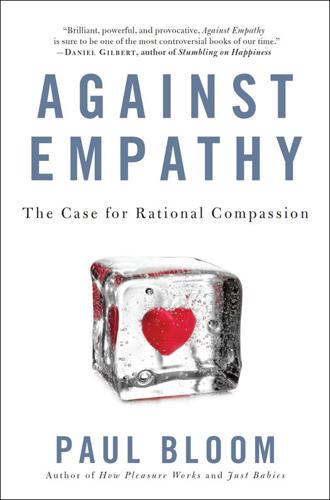
Against Empathy: The Case for Rational Compassion
by
Paul Bloom
A good therapist, one might argue, should understand what it’s like to be depressed and anxious and lonely—and this means that he or she must have at one point felt depressed and anxious and lonely. These are the sorts of experiences—what Laurie Paul calls “transformative experiences”—that you have to undergo yourself in order to know what they’re like. Imagination isn’t enough. There’s just no substitute for the real thing. Frank Jackson makes this point through a famous thought experiment (one expanded upon in the wonderful science fiction/horror movie, Ex Machina). Jackson tells the story of Mary, a brilliant scientist, who has spent her life stuck in a black-and-white room, with a black-and-white television monitor. Mary studies human perception and comes to know everything about the neuroscience of seeing color.
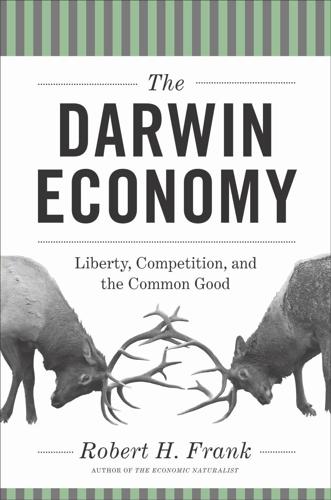
The Darwin Economy: Liberty, Competition, and the Common Good
by
Robert H. Frank
Published 3 Sep 2011
Reflecting on that fact, even a rational libertarian might wish to consider supplementing market incomes with some form of social safety net. Once members have agreed to the institutions and governing rules for their societies, however, they’re free to spend their incomes as they wish. I note in passing that this exercise is in at least one important respect very different from the famous thought experiment proposed by the moral philosopher John Rawls.1 Rawls asked readers to imagine themselves behind a veil of ignorance that shielded them from knowing what their own talents and temperaments were. He argued that distribution rules chosen from behind such a veil would be presumptively fair, since people wouldn’t know which particular rules would work to their advantage.

The Rationalist's Guide to the Galaxy: Superintelligent AI and the Geeks Who Are Trying to Save Humanity's Future
by
Tom Chivers
Published 12 Jun 2019
You may have spotted an obvious problem here, which is that the AI doesn’t actually exist yet, so it can’t hurt anybody. But that, according to something Eliezer Yudkowsky developed called Timeless Decision Theory (TDT), might not be such a problem for it. I’m going to have to go on a bit of a tangent here. There’s a famous thought experiment called Newcomb’s paradox. It goes like this. Imagine that a superintelligent being, Omega, appears before you with two boxes. One is transparent and contains £1,000. The other is opaque, and Omega tells you that it contains either £1,000,000 or nothing at all. You can take both boxes, or you can take just the opaque box.
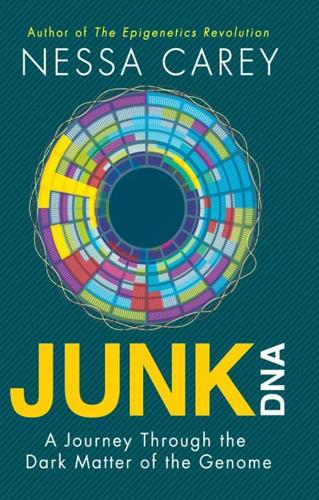
Junk DNA: A Journey Through the Dark Matter of the Genome
by
Nessa Carey
Published 5 Mar 2015
A recent commentary suggested that ‘A distinct possibility is that many of the long transcripts are, at best, nudgers and tweakers of genome management, rather than switches per se.’35 But the greatest complexity and options for flexibility come not from on/off or black/white but from subtle changes in sound levels or from multiple shades of grey. Biologically, we may owe an awful lot to our nudges and tweaks. Footnotes a This is a famous thought experiment. No actual frogs were harmed in the creation of this anecdote. b They are known as linc RNAs, which stands for long intergenic non-coding RNAs. 9. Adding Colour to the Dark Matter In biology, the question What does something do? is almost always followed by the question How does it do it?.
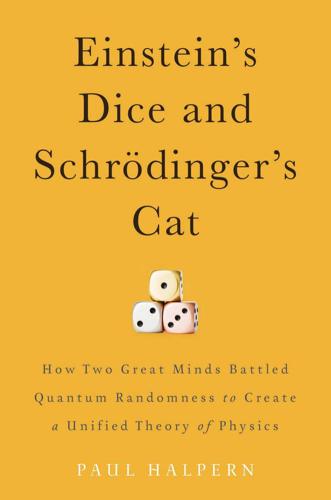
Einstein's Dice and Schrödinger's Cat: How Two Great Minds Battled Quantum Randomness to Create a Unified Theory of Physics
by
Paul Halpern
Published 13 Apr 2015
“How Schrödinger has proceeded we are not told,” it reported.2 For a fleeting moment it seemed that a Viennese physicist whose name was then little known to the general public had beaten the great Einstein to a theory that explained everything in the universe. Perhaps it was time, puzzled readers may have thought, to get to know Schrödinger better. 2 Introduction: Allies and Adversaries A Gruesome Conundrum Today, what comes to mind for most people who have heard of Schrödinger are a cat, a box, and a paradox. His famous thought experiment, published as part of a 1935 paper, “The Present Situation in Quantum Mechanics,” is one of the most gruesome devised in the history of science. Hearing about it for the first time is bound to trigger gasps of horror, followed by relief that it is just a hypothetical experiment that presumably has never been attempted on an actual feline subject.
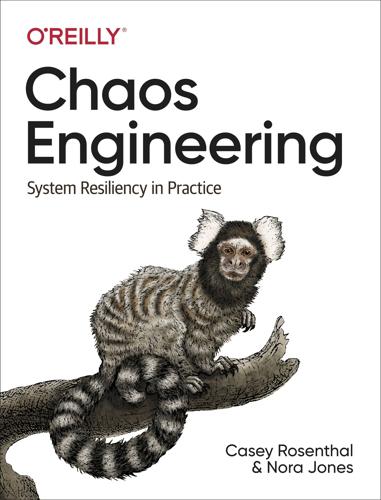
Chaos Engineering: System Resiliency in Practice
by
Casey Rosenthal
and
Nora Jones
Published 27 Apr 2020
Although this worked back then, all these tasks involved manual and tedious operations. As the TiDB codebase and userbase grew, more and more experiments needed to run concurrently. The manual way simply couldn’t scale. We needed an automatic pipeline that solves this pain. Automated Experimentation Platform: Schrodinger The famous thought experiment Schrodinger’s cat presented a hypothetical cat that may be simultaneously alive and dead, by being linked to a subatomic event that may or may not occur. Various interpretations aside, we found the unpredictability in the experiment and the device that caused it perfectly apply to our practices of Chaos Engineering.
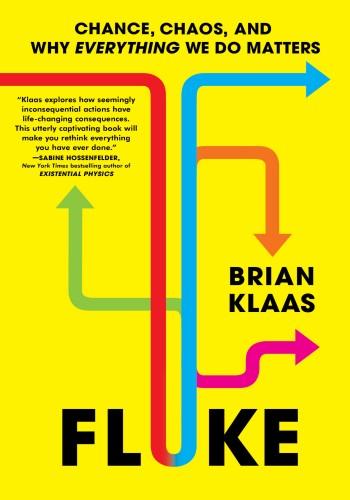
Fluke: Chance, Chaos, and Why Everything We Do Matters
by
Brian Klaas
Published 23 Jan 2024
Salganik et al., “Measuring the Predictability of Life Outcomes with a Scientific Mass Collaboration,” Proceedings of the National Academy of Sciences 117 (15) (2020): 8398–403. CHAPTER 12: COULD IT BE OTHERWISE? “would everything turn out the same?”: This is an adapted version of the famous thought experiment by Stephen Jay Gould called “replaying the tape of life.” For a nuanced discussion of it, see Z. D. Blount, R. E. Lenski, and J. B. Losos, “Contingency and Determinism in Evolution: Replaying Life’s Tape,” Science 362 (6415) (2018). If the world is deterministic: Carl Hoefer, “Causal Determinism,” in The Stanford Encyclopedia of Philosophy, ed.
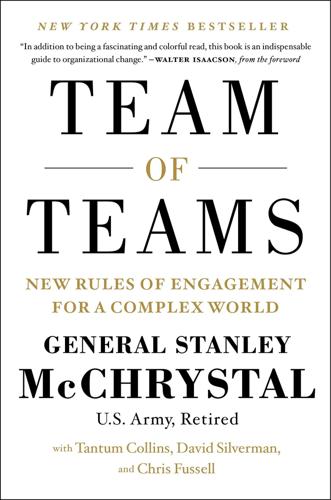
Team of Teams: New Rules of Engagement for a Complex World
by
General Stanley McChrystal
,
Tantum Collins
,
David Silverman
and
Chris Fussell
Published 11 May 2015
This fictionalized episode provides a good introduction to one of the major ideas of game theory: while Adam Smith has led us to believe that, as movie-Nash summarizes it, “the best result comes from everyone in the group doing what’s best for himself,” movie-Nash adds that there are times when “the best result would come from everyone in the group doing what’s best for themselves . . . and the group.” • • • This basic tenet of game theory is also illustrated by the Prisoner’s Dilemma. In this famous thought experiment, two criminals—coconspirators—are arrested. They are taken to separate cells and interrogated. Both are offered the same deal: if you stay silent you’ll be sentenced to one year; if you rat on your partner you’ll go free; but if your partner rats on you, you’ll serve two years. From a competitive, personal-interest perspective, both prisoners are incentivized to rat.
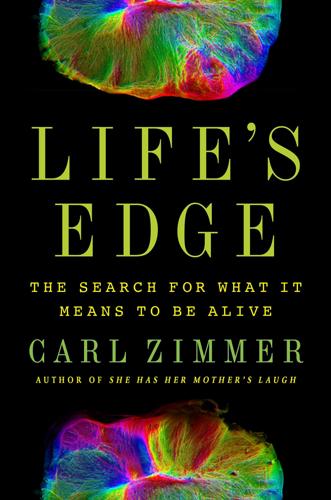
Life's Edge: The Search for What It Means to Be Alive
by
Carl Zimmer
Published 9 Mar 2021
* * * — Erwin Schrödinger was born in Vienna in 1887 and went on to become a physics professor in Zurich, where he developed an equation that would bear his name. The Schrödinger equation predicts how a system—be it a photon or an atom or a group of molecules—changes through time and space in a wavelike fashion. But Schrödinger’s name also became affixed to the most famous thought experiment involving a cat. Schrödinger recognized the profound weirdness that his work and that of other quantum physicists implied. He offered a way to picture that weirdness: Think of a cat in a box. The box is rigged up with a device that can flood it with poison and kill the cat. Now imagine that the device can activate in response to a radioactive atom spontaneously decaying.
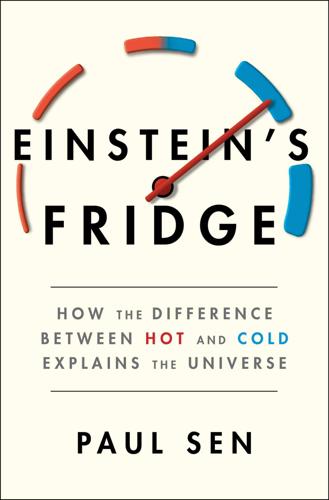
Einstein's Fridge: How the Difference Between Hot and Cold Explains the Universe
by
Paul Sen
Published 16 Mar 2021
Einstein understood this meant replacing Isaac Newton’s theory of gravity, which had been published in 1687. It also meant that the redefinition of space and time brought about by the special theory had to be made even stranger. For an intuitive grasp of this new vision of reality, we might re-create in our minds one of Einstein’s most famous thought experiments, first imagined in 1907, which he later described as the “happiest thought of my life.” Imagine a physicist called Alice in a windowless box in the depths of empty space, far from the gravitational effects of stars and planets. She floats around the box, feeling no pull in any direction.
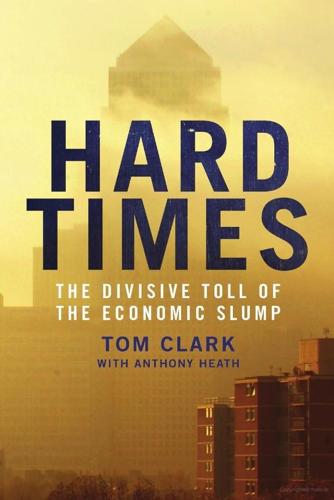
Hard Times: The Divisive Toll of the Economic Slump
by
Tom Clark
and
Anthony Heath
Published 23 Jun 2014
As the slump wore on, increasing numbers snitched on one another to the dole office for tiny transgressions, such as busking with a harmonica while drawing relief.1 Likewise, at much the same time in England's industrial North, Orwell reported on ‘much spying and tale-bearing’, with one man he knew ‘seen feeding his neighbour's chickens while the neighbour was away’ and subsequently being reported to the authorities for having ‘a job feeding chickens’.2 The response to hardship can go either way. Let us consider, first, why a mood of solidarity could rise as the economy sinks. In a famous thought experiment, the philosopher John Rawls provided a theoretical underpinning for egalitarian institutions, with his ‘veil of ignorance’.3 This device imagines prospective citizens debating the best way to run society from behind a ‘veil’ that blocks their knowledge of the rank that they will occupy within that society.
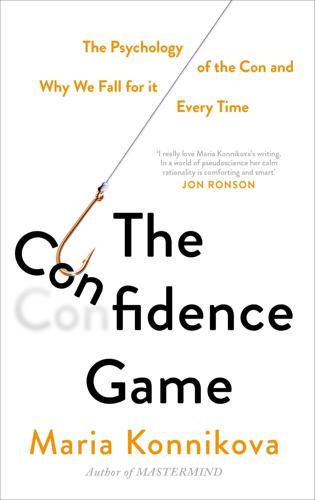
The Confidence Game: The Psychology of the Con and Why We Fall for It Every Time
by
Maria Konnikova
Published 28 Jan 2016
Anticipated emotion—that is, the emotion we can anticipate feeling if we take a certain course of action—strongly favors the status quo. Anticipated regret makes us want to keep doing what we’re doing; anticipated stress makes us want to cope proactively, by not doing anything that might provoke said stress; and anticipated guilt makes us likewise want to prevent it from ever happening. In one of their famous thought experiments, Daniel Kahneman and Amos Tversky described two individuals who’d been playing the stock market. Both had just lost $1,200 on a certain stock. The difference between them was in how they’d lost it. The first had lost it after initially buying one stock and then, after a bit of thought, switching to another.

Cities Are Good for You: The Genius of the Metropolis
by
Leo Hollis
Published 31 Mar 2013
In 1735 he was given the challenge of finding the quickest route through the city over all seven bridges that crossed the river but without ever using one more than once. Euler had to invent a whole new area of mathematics, graph theory, in order to find the solution. Euler’s challenge has evolved into a famous thought-experiment called the Travelling Salesman Problem. A door-to-door merchant must find the shortest and quickest route between various points in order to maximise his time and profits. As the number of stop-offs increases the variable of potential routes rises exponentially: between two points, the variation of journey is simple; between four points, the variables increase to twenty-four; soon, however, you start to get very large numbers, and finding the quickest route between ten points means checking 3.6 million options.

Super Thinking: The Big Book of Mental Models
by
Gabriel Weinberg
and
Lauren McCann
Published 17 Jun 2019
Some may have little to no effect, whereas others might form the basis for a scenario you should consider deeply. Another technique for thinking more broadly about possible future scenarios is the thought experiment, literally an experiment that occurs just in your thoughts, i.e., not in the physical world. The most famous thought experiment is probably “Schrödinger’s cat,” named after Austrian physicist Erwin Schrödinger, who thought it up in 1935 to explore the implications of different interpretations of the physics of quantum mechanics. From his 1935 paper “The Present Situation in Quantum Mechanics”: A cat is penned up in a steel chamber, along with the following device (which must be secured against direct interference by the cat): in a Geiger counter, there is a tiny bit of radioactive substance, so small, that perhaps in the course of the hour one of the atoms decays, but also, with equal probability, perhaps none; if it happens, the counter tube discharges and through a relay releases a hammer that shatters a small flask of hydrocyanic acid.

Who Owns the Future?
by
Jaron Lanier
Published 6 May 2013
But Sirens might be even more dangerous in inorganic form, because it is then that we are really most looking at ourselves in disguise. It is not the siren who harms the sailor, but the sailor’s inability to think straight. So it is with us and our machines. Siren Servers are fated by their nature to sow illusions. They are cousins to another seductive literary creature, star of the famous thought experiment known as Maxwell’s Demon, after the great 19th century physicist James Clerk Maxwell. The demon is an imaginary creature that, if it could only exist, would be able to implement a perpetual motion machine and perform other supernatural tricks. Maxwell’s Demon might be stationed at a tiny door separating two chambers filled with water or air.

Coders: The Making of a New Tribe and the Remaking of the World
by
Clive Thompson
Published 26 Mar 2019
We don’t even understand how the motivations and consciousness of humans emerge, after all. But as Bostrom writes, maybe a “superintelligent” AI wouldn’t need to evolve any new motivations to be dangerous. It could be perfectly benign, happy to do as it’s told—yet still slaughter or enslave us all in happy pursuit of its goals. In one famous thought experiment, Bostrom imagined a superintelligent AI being tasked with making as many paper clips as possible. It might decide the best way to do this would be to disassemble all matter on earth—including humans—to convert it into the raw material for making infinite paper clips, and then barrel onward and outward, converting “increasingly large chunks of the observable universe into paper clips.”

Lifespan: Why We Age—and Why We Don't Have To
by
David A. Sinclair
and
Matthew D. Laplante
Published 9 Sep 2019
From there, we head down to the scale of amino acids and DNA. At this size, it is obvious why we don’t live forever. Until we understood life at the nanoscale, even why we live was a mystery. The brilliant Austrian theoretical physicist Erwin Schrödinger, the man who developed quantum physics (and yes, that famous thought experiment involving a both-dead-and-alive cat) was flummoxed when he tried to explain life. In 1944, he threw up his hands and declared that living matter “is likely to involve ‘other laws of physics’ hitherto unknown.”1 That was the best he could do at the time. But things moved quickly in the decades to come.
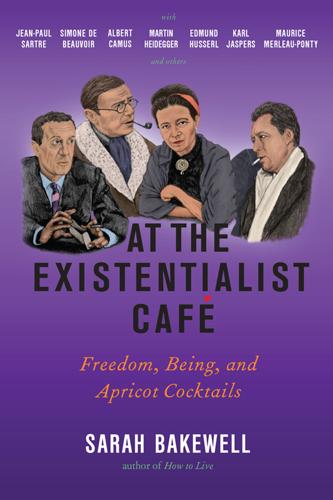
At the Existentialist Café: Freedom, Being, and Apricot Cocktails With Jean-Paul Sartre, Simone De Beauvoir, Albert Camus, Martin Heidegger, Maurice Merleau-Ponty and Others
by
Sarah Bakewell
Published 1 Mar 2016
So: should he do the right thing by his mother, with clear benefits to her alone, or should he take a chance on joining the fight and doing right by many? Philosophers still get into tangles trying to answer ethical conundrums of this kind. Sartre’s puzzle has something in common with a famous thought experiment, the ‘trolley problem’. This proposes that you see a runaway train or trolley hurtling along a track to which, a little way ahead, five people are tied. If you do nothing, the five people will die — but you notice a lever which you might throw to divert the train to a sidetrack. If you do this, however, it will kill one person, who is tied to that part of the track and who would be safe if not for your action.
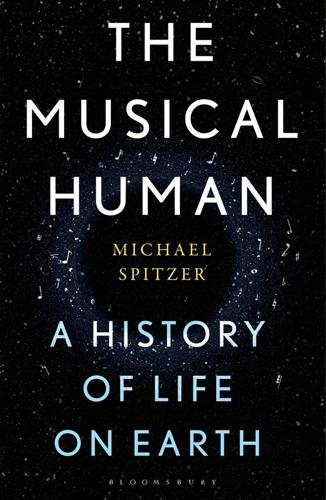
The Musical Human: A History of Life on Earth
by
Michael Spitzer
Published 31 Mar 2021
The slow movement of Schubert’s mighty Ninth Symphony is like those vast mountainous landscapes that Schubert loved trekking through in southern Austria. Walking through a landscape is intrinsic to Western music; it is not a metaphor. But that doesn’t mean that there aren’t further mysteries to how we imagine it. To go further down that path, we need to consider a famous thought experiment by the philosopher Ludwig Wittgenstein.19 The image in Figure 4.3 shows a pair of protuberances jutting from a circle. You can choose to see them as either the ears of a rabbit or the beak of a duck. You can even flick from one to the other at will. Wittgenstein uses this illusion to explain his distinction between ‘seeing’ and ‘seeing as’.
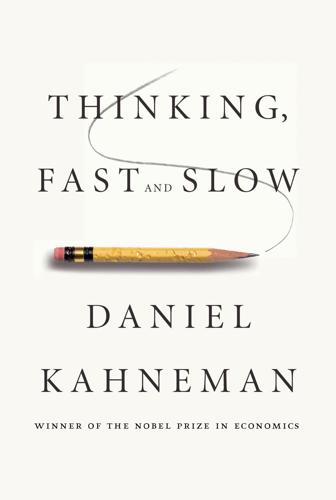
Thinking, Fast and Slow
by
Daniel Kahneman
Published 24 Oct 2011
Several studies have shown that human decision makers are inferior to a prediction formula even when they are given the score suggested by the formula! They feel that they can overrule the formula because they have additional information about the case, but they are wrong more often than not. According to Meehl, there are few circumstances under which it is a good idea to substitute judgment for a formula. In a famous thought experiment, he described a formula that predicts whether a particular person will go to the movies tonight and noted that it is proper to disregard the formula if information is received that the individual broke a leg today. The name “broken-leg rule” has stuck. The point, of course, is that broken legs are very rare—as well as decisive.
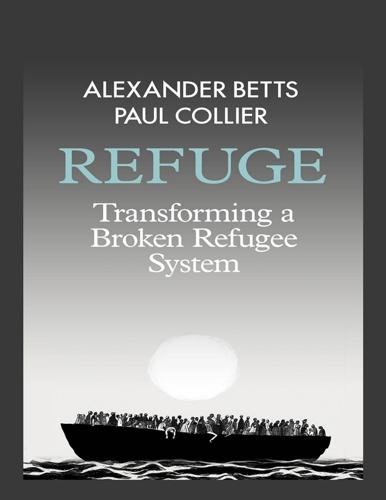
Refuge: Transforming a Broken Refugee System
by
Alexander Betts
and
Paul Collier
Published 29 Mar 2017
In a justly celebrated book, The Righteous Mind, Jonathan Haidt shows that people tend to cling on to their moral judgements, wriggling from one fatuous justification to another as each is seen to be wrong.1 In other words, people are morally lazy. Unfortunately, wisdom is sometimes demanding. THE DUTY OF RESCUE TOWARDS REFUGEES In a famous moral thought experiment, students are asked to imagine themselves alone by a pond into which a child has fallen by accident and is crying for help. As a bystander, you were not responsible for that accident. You are a good swimmer, but is it legitimate for you to ignore that urgent cry because you do not want to damage your clothing?

On the Edge: The Art of Risking Everything
by
Nate Silver
Published 12 Aug 2024
One of the reasons Phil Tetlock (of hedgehog-and-foxes fame) found that experts made such poor forecasts is because they’d been allowed to get away with this lazy rhetoric. By contrast, someone like Yudkowsky—whose p(doom) is very high, fairly close to 100 percent—will take a lot of reputational damage if AI alignment proves relatively easy to achieve. Whereas if the machines turn us all into paper clips—one of Nick Bostrom’s famous thought experiments involves an unaligned AI with the goal of manufacturing as many paper clips as possible—he won’t be around to take credit. (As someone who has as much experience as pretty much anyone making probabilistic forecasts in public, I can also tell you from firsthand experience that incentives to do this are poor.
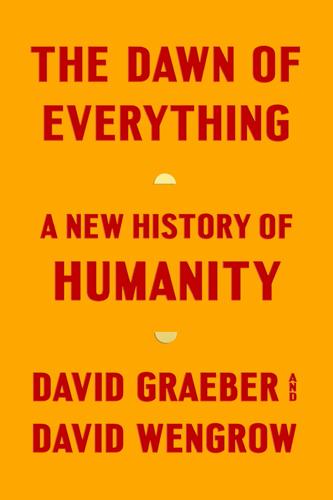
The Dawn of Everything: A New History of Humanity
by
David Graeber
and
David Wengrow
Published 18 Oct 2021
IN WHICH WE LAY OUT A THEORY CONCERNING THE THREE ELEMENTARY FORMS OF DOMINATION, AND BEGIN TO EXPLORE ITS IMPLICATIONS FOR HUMAN HISTORY The best way to go about this task, we suggest, is by returning to first principles. We have already talked about fundamental, even primary, forms of freedom: the freedom to move; the freedom to disobey orders; the freedom to reorganize social relations. Can we speak similarly about elementary forms of domination? Recall how Rousseau, in his famous thought experiment, felt that everything went back to private property, and especially property in land: in that terrible moment when a man first threw up a barrier and said, ‘This territory is mine, and mine alone’, all subsequent forms of domination – and therefore, all subsequent catastrophes – became inevitable.
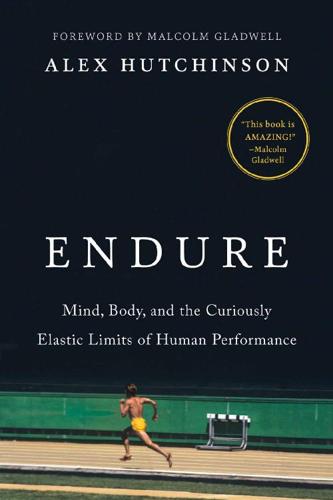
Endure: Mind, Body, and the Curiously Elastic Limits of Human Performance
by
Alex Hutchinson
Published 6 Feb 2018
Scientists gradually fine-tuned their models of endurance by incorporating other physiological traits like economy and “fractional utilization” along with VO2max—the equivalent of considering a car’s fuel economy and the size of its gas tank in addition to its raw horsepower. It was in this context that Michael Joyner proposed his now-famous 1991 thought experiment on the fastest possible marathon. As a restless undergraduate in the late 1970s, Joyner had been on the verge of dropping out of the University of Arizona—at six-foot-five, and with physical endurance that eventually enabled him to run a 2:25 marathon, he figured he might make a pretty good firefighter—when he was outkicked at the end of a 10K race by a grad student from the school’s Exercise and Sport Science Laboratory.39 After the race, the student convinced Joyner to volunteer as a guinea pig in one of the lab’s ongoing experiments, a classic study that ended up demonstrating that lactate threshold, the fastest speed you can maintain without triggering a dramatic rise in blood lactate levels, is a remarkably accurate predictor of marathon time.

Palo Alto: A History of California, Capitalism, and the World
by
Malcolm Harris
Published 14 Feb 2023
It doesn’t cost; capital is paying him and his friends to do it, and paying them very well. No wonder so many people in the Thielverse are convinced there’s a superintelligence that will reward them for building these systems. One already is. On the Reddit forum devoted to Palantir, a user called Dorktastical suggested a modification to the famous thought experiment: Palantir is Peter Thiel creating Roko’s Basilisk. He may have already made it. This gives you two choices: 1) Be tortured for all of eternity by Roko’s Basilisk 2) Put all of your holdings in to PLTR [Palantir stock] and never sell If it turns out that PLTR isn’t Roko’s Basilisk, you can still say you’ve fulfilled your commitment to bring Roko’s Basilisk into existence, and avoid eternal damnation.89 You’re probably already being tortured if you haven’t given your money to Thiel, Dorktastical concludes, since this world is most likely a simulation and Thiel has already correctly determined that your faith is weak.
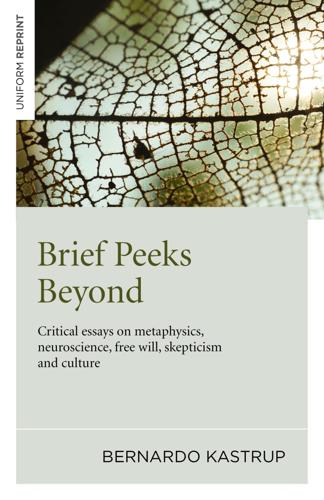
Brief Peeks Beyond: Critical Essays on Metaphysics, Neuroscience, Free Will, Skepticism and Culture
by
Bernardo Kastrup
Published 28 May 2015
I can create a computer program that ultimately attributes the logical value ‘true’ to a variable labeled ‘conscious,’ but obviously that doesn’t take the computer any closer to having inner life the way you and I have, no matter how complex the program. As philosopher John Searle demonstrated decades ago with his famous ‘Chinese Room’ thought experiment, the manipulation of variables is utterly unrelated to subjective experience.54 Moreover, eliminative materialists fail to notice that their claim about the non-existence of consciousness is itself the output of their intellectual models; models that, according to their own logic, cannot be trusted.
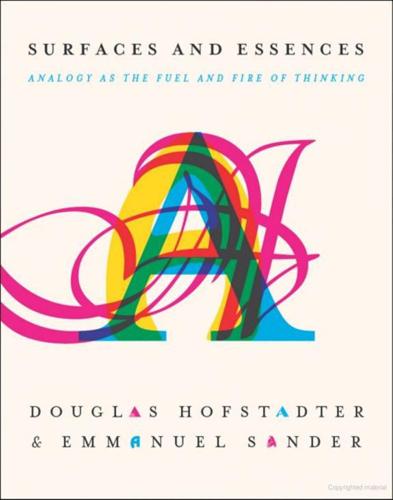
Surfaces and Essences
by
Douglas Hofstadter
and
Emmanuel Sander
Published 10 Sep 2012
This was because he knew that he did not have the requisite knowledge, be it theoretical or experimental, that would allow him to predict what would happen in such a case. And that was why he knew he had arrived at a critical crossroads. His theoretical knowledge and his gift for imagining the consequences of various idealized physical circumstances (his famous “thought experiments”), even when aided by the cleverest reasoning, simply would not allow him to go any further. He had reached a crucial spot where he would have to take yet another daring step, once again a step that would rely solely on an esthetic motivation, a step grounded solely in his belief in the deep unity of the laws that govern the universe — that is to say, to his unshakable faith in the existence of very simple, general, and elegant principles.
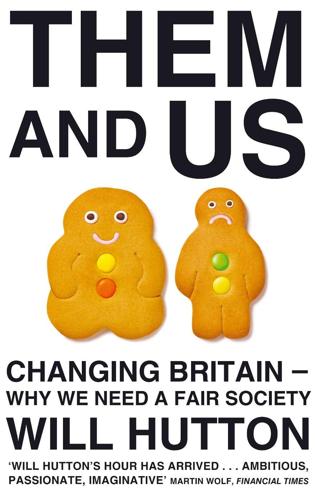
Them And Us: Politics, Greed And Inequality - Why We Need A Fair Society
by
Will Hutton
Published 30 Sep 2010
Rawls continues: ‘even the willingness to make an effort, to try to be deserving in an ordinary sense is dependent on fortunate family and social circumstances’.13 Personal characteristics are shaped by society to such a degree that they cannot be included in any roll-call of judgements about worth. The key, therefore, to creating a just society is to do as much as possible to iron out differences due to the accident of birth that predetermines everything. If nobody cared where they were born and by whom they were raised, so they would willingly swap places – the famous Rawlsian thought experiment behind a ‘veil of ignorance’ – society would conform to norms of justice. You do not have to be a Rawlsian, Marxist or Rousseauen ultra to concede the force of the argument. Contemporary conservatives who want to make the individual the mainspring of all action go too far. Nevertheless, there is free will, so it cannot be said that everything is predetermined by economic and social structures.
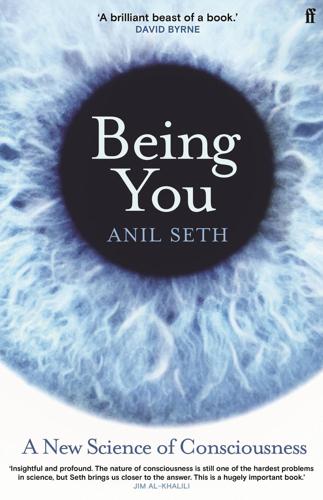
Being You: A New Science of Consciousness
by
Anil Seth
Published 29 Aug 2021
The story of the original program, AlphaGo, is beautifully told in a film of the same name: https://www.alphagomovie.com/. Some might quibble that these programs are more accurately described as playing ‘the history of Go’ rather than Go itself. there’s a valid question: A more sophisticated version of this argument has been developed by John Searle in his famous ‘Chinese room’ thought experiment. I didn’t use this example here because Searle’s argument is targeted primarily at intelligence (or ‘understanding’) rather than consciousness (Searle, 1980). an empirical dead end: The philosopher John Perry said: ‘If you think about consciousness long enough, you either become a panpsychist or you go into administration.’

Dawn of the New Everything: Encounters With Reality and Virtual Reality
by
Jaron Lanier
Published 21 Nov 2017
Chapter 8 1. Decades later, when the computers had long been connected, “cracker” showed up again as a derogatory term for “white male who doesn’t appreciate his innate privileges.” Almost all the crackers back in the 1980s were crackers. 2. The Prisoner’s Dilemma is one of the most famous game theory thought experiments. It has been adapted into game shows and movie plots. I won’t explain it here; look it up. It’s interesting from a mathematical point of view, but it’s a horrible way to think about real life, which is never so clear cut. I find it heartbreaking to watch people on game shows or other real life enactments of the Prisoner’s Dilemma learn to become cruel and deceitful to one another.
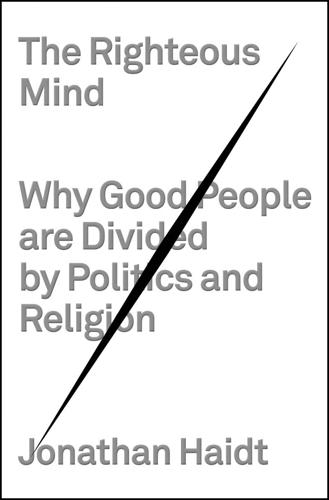
The Righteous Mind: Why Good People Are Divided by Politics and Religion
by
Jonathan Haidt
Published 13 Mar 2012
Darwin did believe that tribes competed with tribes (see chapter 9), but he was no social Darwinist, according to Desmond and Moore 2009. 13. Hitler was a vegetarian too, but nobody would argue that endorsing vegetarianism makes one a Nazi. 14. Pinker 2002, p. 106. 15. Rawls remains one of the most cited political philosophers. He is famous for his thought experiment in Rawls 1971 asking people to imagine the society they would design if they had to do so from behind a “veil of ignorance” so that they would not know what position they would eventually occupy in that society. Rationalists tend to love Rawls. 16. Wilson’s exact words bear repeating, for they were prophetic: “Ethical philosophers intuit the deontological canons of morality by consulting the emotive centers of their own hypothalamic-limbic system.
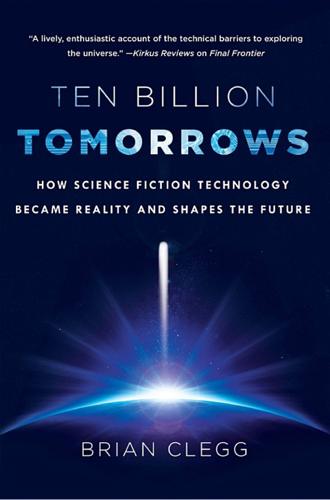
Ten Billion Tomorrows: How Science Fiction Technology Became Reality and Shapes the Future
by
Brian Clegg
Published 8 Dec 2015
Herbert’s thought experiment was the last serious attempt to break the instant communication barrier since the 1980s (though many a physics student will toy with the idea when they find out about entanglement), but 2014 brought a new piece of work that again had some observers wondering if, at last, a quantum entanglement experiment had been performed that would make it possible to send a message instantly without entanglement’s penchant for randomness getting in the way. Researchers from the Institute for Quantum Optics and Quantum Information, the Vienna Center for Quantum Science and Technology, and the University of Vienna managed to transmit the image of an object (the outline of a cat, in honor of the famous “Schrödinger’s cat” thought experiment) without ever detecting the light that came from the object. The experiment used pairs of entangled photons, one red and the other infrared. The infrared photon hits the object, then is sent into a crystal where it interferes with a second infrared entangled photon. If the entangled red photons are then brought together, they produce an interference pattern that shows the object, even though they never went near it.
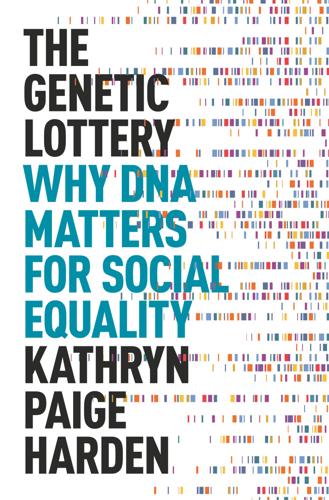
The Genetic Lottery: Why DNA Matters for Social Equality
by
Kathryn Paige Harden
Published 20 Sep 2021
Consistent with children’s strong preferences for equality, my kids always choose to divide the cookie as equally as possible. How do you divide the cookie if you don’t know which piece you’ll get? It’s a premise that will be familiar to anyone who has taken an undergraduate class in political philosophy. The most famous version of this thought experiment was proposed by the philosopher John Rawls, who imagined something called “the veil of ignorance.” Behind the veil of ignorance,31 no one knows his place in society, his class position or social status; nor does he know his fortune in the distribution of natural assets and abilities, his intelligence and strength, and the like.
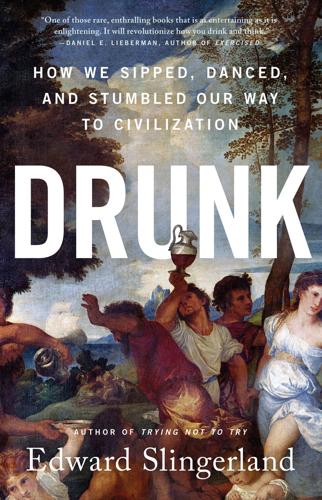
Drunk: How We Sipped, Danced, and Stumbled Our Way to Civilization
by
Edward Slingerland
Published 31 May 2021
These sorts of cooperation challenges pervade the human social world on every scale of interaction. They hamper global efforts to combat climate change, cause political parties and economic cartels to fracture,45 and often force individuals into difficult choices. One such choice is the basis of the famous Prisoner’s Dilemma thought experiment, which vividly illustrates a variant of the free-rider problem. Imagine you have been detained and accused of committing a crime. The prosecutor tells you that another suspect in the same crime, of whom you know nothing, has also been detained. You are offered a deal: Rat out the other person and you will get a slap on the wrist, a one-month sentence, while the other person will get the full three-year sentence.
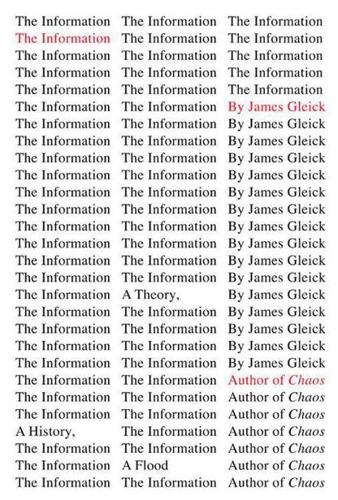
The Information: A History, a Theory, a Flood
by
James Gleick
Published 1 Mar 2011
To dramatize his perfect determinism, Laplace asked us to imagine a being—an “intelligence”—capable of perfect knowledge: It would embrace in the same formula the movements of the greatest bodies of the universe and those of the lightest atom; for it, nothing would be uncertain and the future, as the past, would be present to its eyes.♦ Nothing else Laplace wrote ever became as famous as this thought experiment. It rendered useless not only God’s will but Man’s. To scientists this extreme Newtonianism seemed cause for optimism. To Babbage, all nature suddenly resembled a vast calculating engine, a grand version of his own deterministic machine: “In turning our views from these simple consequences of the juxtaposition of a few wheels, it is impossible not to perceive the parallel reasoning, as applied to the mighty and far more complex phenomena of nature.”♦ Each atom, once disturbed, must communicate its motion to others, and they in turn influence waves of air, and no impulse is ever entirely lost.

Robot Rules: Regulating Artificial Intelligence
by
Jacob Turner
Published 29 Oct 2018
. … It is thanks to this decoupling that AI can colonise tasks whenever this can be achieved without understanding, awareness, sensitivity, hunches, experience or even wisdom. In short, it is precisely when we stop trying to reproduce human intelligence that we can successfully replace it. Otherwise, AlphaGo would have never become so much better than anyone at playing Go.103 In philosopher Philippa Foot’s famous “Trolley Problem”104 thought experiment, participants are asked what they would do if they saw a train carriage (a trolley), heading down railway tracks, towards five workmen who are in the train’s path and would not have a chance to move before being hit. If the participant does nothing, the train will hit the five workmen.

Reaper Force: The Inside Story of Britain’s Drone Wars
by
Dr Peter Lee
Published 14 Jul 2019
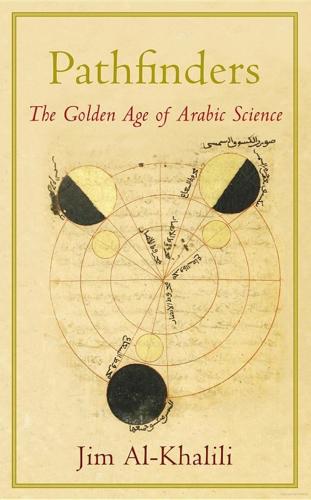
Pathfinders: The Golden Age of Arabic Science
by
Jim Al-Khalili
Published 28 Sep 2010
But unlike the Canon this was no medical text; the word shifā’ actually means ‘cure’, in the sense that the book was written as a general compendium of knowledge in the hope of curing the world of the disease of ignorance. In all, al-Shifā’ contained nine volumes on logic and eight on the natural sciences. Other volumes covered arithmetic, geometry, astronomy, music and, of course, metaphysics. It is in a section on psychology, for instance, that we encounter one of Ibn Sīna’s most famous arguments: the ‘floating man’ thought-experiment. With it, Ibn Sīna refutes the moralist belief of earlier Muslim theologians that our physical bodies are all that exists. He does this by describing a scenario that he believed proves the immateriality of the human soul: Suppose that a man is created all at once, fully developed and perfectly formed but with his vision shrouded from perceiving all external objects – created floating in the air or in space, not buffeted by any perceptible currents of the air that supports him, his limbs separated and kept out of contact from one another, so that they do not feel each other.
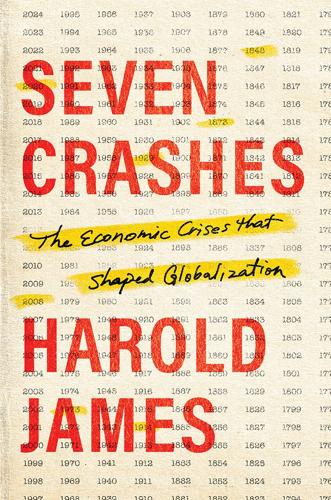
Seven Crashes: The Economic Crises That Shaped Globalization
by
Harold James
Published 15 Jan 2023
Bernanke thought of the objections, that “announcing a target that they are not sure they know how to achieve will endanger the Bank’s credibility; and they have expressed skepticism that simple announcements can have any effects on expectations.”103 In this context, Bernanke invoked a famous (he called it “hoary”) thought experiment of Milton Friedman’s, the “helicopter drop” of newly printed money. “I think most economists would agree that a large enough helicopter drop must raise the price level.”104 This approach meant that asset price concerns were relegated to a less important place in monetary policy-making.

Admissions: A Life in Brain Surgery
by
Henry Marsh
Published 3 May 2017
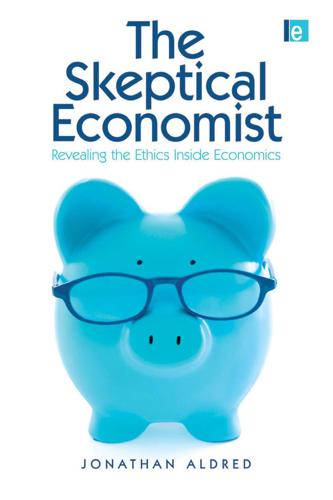
The Skeptical Economist: Revealing the Ethics Inside Economics
by
Jonathan Aldred
Published 1 Jan 2009
Happiness as good feelings31 The fundamental problem with this view of happiness is that it conflicts with many of our strongest intuitions about the meaning of happiness. The strongest of all is probably the intuition that our happiness concerns what our life is really like, not merely how it seems to be. The most famous illustration of this intuition is a thought experiment, The Experience Machine, conducted by the philosopher Robert Nozick. The Experience Machine Suppose there were an experience machine that would give you any experience you desired. Super-duper neuropsychologists could stimulate your brain so that you would think and feel you were writing a great novel, or making a friend, or reading an interesting book.
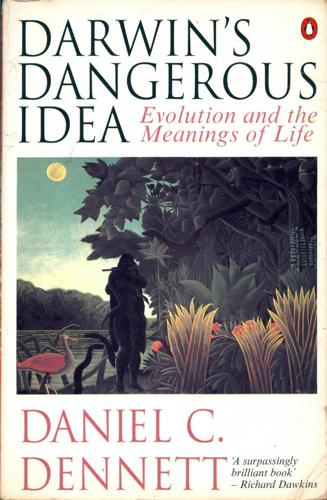
Darwin's Dangerous Idea: Evolution and the Meanings of Life
by
Daniel C. Dennett
Published 15 Jan 1995
Ludwig Wittgenstein famously stressed that in philosophy the process — the arguing and analyzing — is more important than the product — the conclusions reached, the theories defended. Though this is hotly (and correctly, in my opinion) disputed by many philosophers who aspire to solve real problems — and not just indulge in a sort of interminable logotherapy — even they would admit that we would never want to consign Descartes's famous "cogito ergo sum" thought experiment, for example, to oblivion, even though none would accept its conclusions; it is just too nifty an intuition pump, even if all it pumps is falsehoods (Dennett 1984, p. 18). Why can't you copyright a successful multiplication of two numbers? Because anyone could do it. It's a forced move.

Animal Spirits: The American Pursuit of Vitality From Camp Meeting to Wall Street
by
Jackson Lears

The Broken Ladder
by
Keith Payne
Published 8 May 2017
If he has a strong work ethic, he just happened to win the lottery for hardworking traits. And if one boy was strong enough to survive a terrible disease and a weaker boy succumbed, that was merely a brutal fact of life. Rawls saw nothing just or morally praiseworthy in that. The most famous part of Rawls’s theory of justice was a thought experiment called “the veil of ignorance.” Imagine that you have awakened from a deep sleep on an interstellar space flight, and you remember nothing about yourself. You don’t know if you are rich or poor. You don’t know if you are strong or weak, smart or dim-witted. As your spacecraft nears a new planet, you have to choose in which of many societies you would like to live.
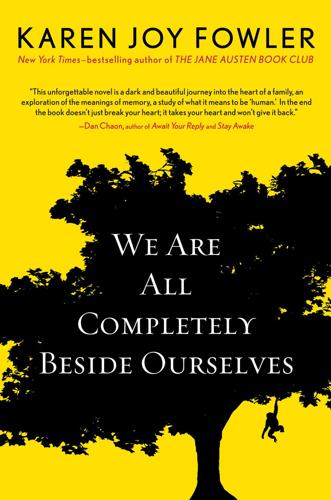
We Are All Completely Beside Ourselves
by
Karen Joy Fowler
Published 29 May 2013

The Singularity Is Nearer: When We Merge with AI
by
Ray Kurzweil
Published 25 Jun 2024
While cynics may dismiss this as a fancy trick of statistics, because those statistics are synthesized from the combined creative output of millions of humans, the AI attains genuine creativity of its own. GPT-3 was the first such model to be commercially marketed and to display this creativity in a way that impressed its users.[100] For example, scholar Amanda Askell prompted it with a passage from philosopher John Searle’s famous “Chinese room argument.”[101] This thought experiment observes that a non-Chinese-speaking human translating the language by manually operating a computer translation algorithm with pen and paper wouldn’t understand the stories being translated. Thus, how could an AI running the same program be said to truly understand? GPT-3 responded, “It is obvious that I do not understand a word of the stories,” explaining that the translation program is a formal system that “does not explain understanding any more than a cookbook explains a meal.”

Memoirs of an Addicted Brain: A Neuroscientist Examines His Former Life on Drugs
by
Marc Lewis Phd
Published 5 Mar 2013

Scale: The Universal Laws of Growth, Innovation, Sustainability, and the Pace of Life in Organisms, Cities, Economies, and Companies
by
Geoffrey West
Published 15 May 2017
One of Watts’s projects has been to verify Milgram’s six degrees of separation result using huge amounts of data on e-mail messages sent between people so as to determine how many links are needed to connect any arbitrary two of them. This was important because Milgram’s work, which was based on traditional letters sent via the regular postal service, had been heavily criticized for its relative sparseness of data and lack of systematic control. Milgram is equally famous for his extremely provocative and thought-provoking experiments investigating obedience to authority. Having been strongly influenced by the events of the Holocaust and in particular by the trial in 1961 of Adolf Eichmann, one of its main architects, he devised experiments to show how easily any of us can be persuaded by peer and group pressures to perform acts or make statements in violation of our beliefs and conscience.

More Everything Forever: AI Overlords, Space Empires, and Silicon Valley's Crusade to Control the Fate of Humanity
by
Adam Becker
Published 14 Jun 2025
Effective altruism seems relatively straightforward on the face of it: evaluate the best ways to make the world a better place, and then devote as much money and time as you can to those efforts. The core of the idea goes back to the philosopher Peter Singer, a professor of ethics at Princeton. Singer has advocated that everyone should give all (or very nearly all) of their disposable income to charity.4 His most famous argument for this idea starts with a simple thought experiment. Suppose you’re taking a walk down a reasonably busy path in a small park. It’s a bit chilly outside, so you’re wearing a sweater—maybe a pretty nice sweater, cashmere or something like that—and a comfortable yet fashionable coat over it. As you stroll down the road, you come upon a muddy pond, and you immediately see that a child is drowning.